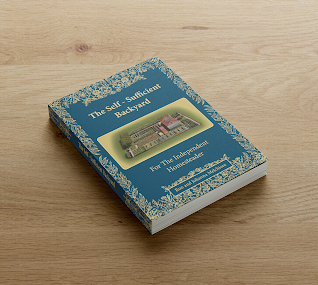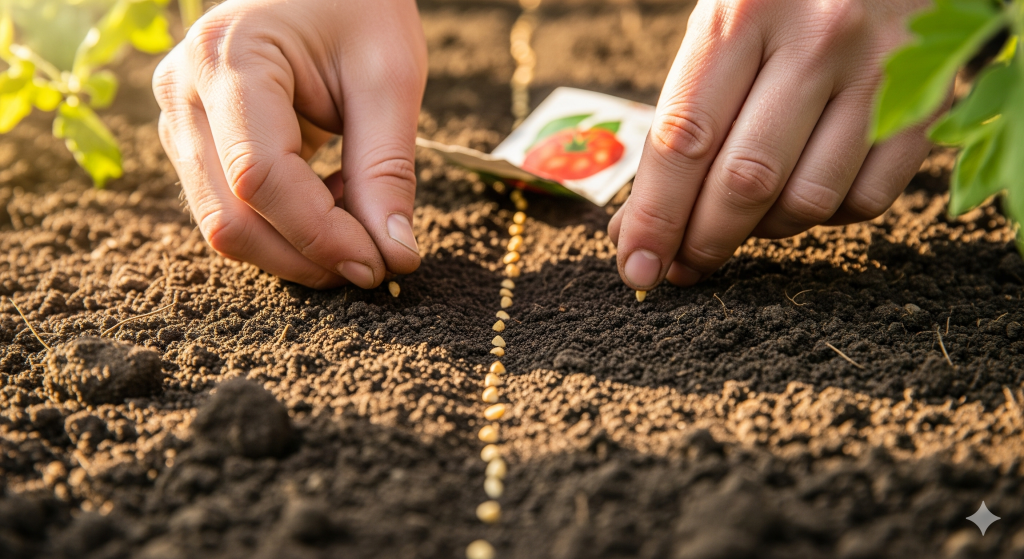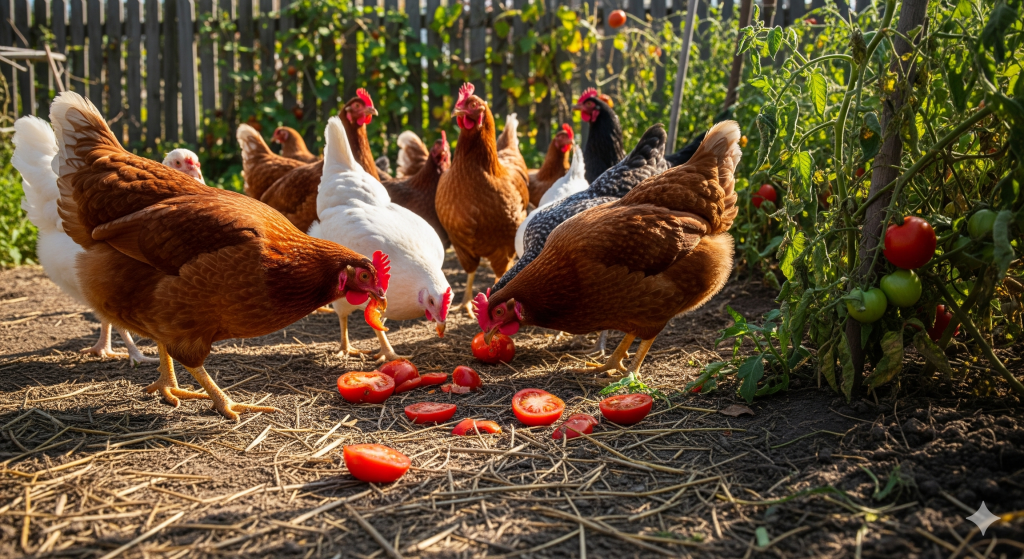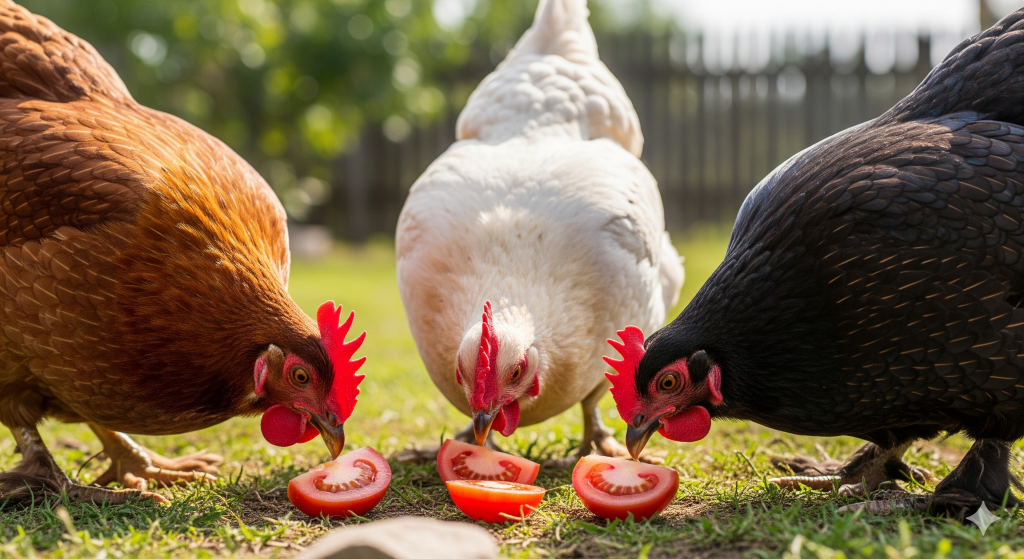Table of Contents
For many gardeners, the process of growing tomatoes starts indoors, with trays of carefully nurtured seedlings under grow lights weeks before the last frost. This traditional method is reliable, but it raises a fundamental question for those seeking a simpler approach: can you plant tomato seeds straight in the ground? The answer is a resounding yes, you absolutely can, but this direct sowing method comes with its own set of rules and considerations for success.
Direct sowing tomatoes is an age-old practice that bypasses the need for indoor seed starting equipment, hardening off seedlings, and transplanting. It’s a method that works with nature’s timing, allowing the plants to grow in their final location from the very beginning. However, success hinges on three critical factors: timing, soil conditions, and your climate. While it may not be the ideal method for gardeners in regions with very short growing seasons, for many, planting tomato seeds directly in the ground can lead to robust, resilient plants that produce a bountiful harvest. This in-depth guide will explore every facet of direct sowing, from seed preparation to soil depth, helping you determine if this straightforward technique is right for your garden.
Ready to Take Your Self-Sufficiency to the Next Level?

If you love the self-sufficient lifestyle, this is the only guide you’ll ever need. Learn how to generate your own power, secure your water supply, and become truly independent. No fluff, just actionable plans.
➡️ Check out The Self-Sufficient Backyard and start your journey today!
Can You Plant Tomatoes Directly in the Ground?
Planting tomato seeds directly into your garden soil is a viable and rewarding method, but it requires patience and a bit of know-how. Unlike starting seeds indoors, you are relinquishing some control to Mother Nature. The success of this technique is highly dependent on your local climate and the length of your growing season.
For direct sowing to be successful, the soil must be consistently warm. Tomato seeds require a soil temperature of at least 15°C (60°F) to germinate, but they perform optimally when the soil is between 21-29°C (70-85°F). Planting seeds in cold, damp soil is a recipe for failure, as the seeds are likely to rot before they have a chance to sprout. This is the primary reason why gardeners in cooler climates with short growing seasons (like those in northern latitudes) almost always start seeds indoors. They simply don’t have a long enough frost-free period to wait for the soil to warm up and still get a full harvest.
However, in regions with long, hot summers, direct sowing is an excellent option. By waiting until after the last frost date when the soil has thoroughly warmed, you can sow seeds directly into your prepared garden beds. The resulting plants are often hardier, as they are immediately adapted to the outdoor environment, eliminating the delicate process of hardening off and the stress of transplanting.
How Many Tomato Seeds Per Hole?
When planting any kind of seed directly in the ground, you must account for the fact that not every seed will germinate. Birds, insects, and unpredictable weather can all impact your success rate. To ensure you get at least one healthy plant in each desired spot, it’s a wise practice to plant more than one seed per hole.
A good rule of thumb is to plant 3 to 4 tomato seeds per hole.
This strategy, known as multi-sowing, significantly increases the likelihood of successful germination in each location. Once the seedlings emerge and have developed their first set of true leaves (the second set of leaves that appear), you can then select the strongest, most vigorous-looking seedling to keep. The others should be thinned out. To thin them, don’t pull them out, as this can disturb the roots of the seedling you want to keep. Instead, simply snip the unwanted seedlings off at the soil line with a small pair of scissors. This ensures the chosen plant has no competition for light, water, and nutrients, allowing it to grow strong and healthy.
How Deep to Plant Tomato Seeds?
The depth at which you plant your seeds is crucial for germination. If planted too deep, the tiny seedling will exhaust its stored energy trying to reach the surface and may never break through the soil. If planted too shallow, the seed can dry out or be washed away by rain or watering.
The ideal planting depth for tomato seeds is approximately 0.6 to 1.25 cm (¼ to ½ inch) deep.
A simple way to achieve this is to create a small indentation in the soil with your fingertip, drop the 3-4 seeds in, and then gently cover them with a light layer of fine soil or compost. After covering the seeds, gently firm the soil down with your hand to ensure good seed-to-soil contact, which is essential for absorbing moisture. Water the area gently but thoroughly with a fine spray to avoid dislodging the seeds. Keep the soil consistently moist but not waterlogged until germination occurs, which can take anywhere from 7 to 14 days, depending on the soil temperature and moisture levels.
Can You Take Seeds from a Tomato and Plant Them?
It’s a tempting thought for any gardener: can you simply slice open a store-bought or garden-grown tomato, scoop out the seeds, and plant them? The answer is yes, you can, but there’s a major caveat that depends on the type of tomato.
First, the seeds inside a tomato are coated in a gelatinous sac that contains germination-inhibiting compounds. In nature, this prevents the seeds from sprouting inside the fruit. To improve your chances of success, you should process the seeds first by fermenting them. To do this, squeeze the seeds and gel into a jar with a little water, let it sit for a few days until a layer of mold forms, then rinse the seeds thoroughly and let them dry completely before planting.
More importantly, the success of your plant depends on whether the parent tomato was an heirloom or a hybrid.
- Heirloom Tomatoes: Seeds saved from heirloom varieties will grow “true to type,” meaning the plant and its fruit will be identical to the parent.
- Hybrid Tomatoes: Hybrid tomatoes are created by cross-pollinating two different parent varieties to produce a plant with specific desirable traits (like disease resistance or uniform size). Seeds saved from a hybrid tomato will not grow true to type. The resulting plant will likely be a genetic lottery, reverting to traits from one of its grandparent plants, and the fruit may be disappointing or completely different.
So, if you’re saving seeds from a known heirloom variety, go for it! If it’s a standard grocery store tomato, it’s likely a hybrid, and your results will be unpredictable.
Do Tomato Seeds Need to Be Soaked Before Planting?
Soaking seeds before planting is a common technique used to speed up germination, but is it necessary for tomatoes? Generally, no, tomato seeds do not need to be soaked before planting. They are small and have a relatively thin seed coat, allowing them to absorb water from the soil quite efficiently on their own.
However, soaking can give them a bit of a head start, potentially shaving a day or two off the germination time. This is especially true for older seeds, as the soaking process can help rehydrate them and “wake them up.”
If you choose to soak your seeds, it’s a simple process. Place them in a small bowl of room temperature water for 4 to 8 hours—no longer than 12 hours. Soaking them for too long can cause them to rot. After soaking, plant them immediately in the prepared soil. While it’s not a mandatory step, it’s a harmless technique that may slightly accelerate the sprouting process.
How to Grow Tomatoes from Seeds in Pots
If direct sowing isn’t ideal for your climate, or if you simply prefer the control of container gardening, growing tomatoes from seeds in pots is a fantastic option.
- Choose the Right Pot: Start with small seed-starting cells or 4-inch pots with good drainage. You will need to transplant them into a much larger final container later on. The final pot for a mature tomato plant should be at least 5 gallons (19 liters), with 10-15 gallons (38-57 liters) being even better, especially for indeterminate varieties.
- Use Quality Potting Mix: Start with a sterile, high-quality seed-starting mix. This type of soil is fine, lightweight, and holds moisture well, providing the perfect environment for delicate seedlings.
- Plant the Seeds: Fill your starter pots with the mix and moisten it thoroughly. Plant 2-3 seeds per pot at the recommended depth of ¼ to ½ inch. Gently cover with soil.
- Provide Warmth and Light: Cover the pots with a plastic dome or plastic wrap to retain humidity and place them in a warm location. A heat mat can significantly speed up germination. Once the seeds sprout, immediately remove the cover and place the pots under a strong light source. A sunny, south-facing windowsill can work, but for the strongest, stockiest seedlings, fluorescent grow lights positioned just a few inches above the plants are ideal.
- Watering and Thinning: Keep the soil consistently moist but not soggy. Once the seedlings have their first true leaves, thin them to one per pot by snipping the weaker ones at the soil line.
- Fertilizing and Transplanting: Once the seedlings are a few inches tall, you can begin feeding them with a half-strength, balanced liquid fertilizer once a week. When they are about 6-8 inches tall and the outdoor weather is appropriate, you can harden them off and transplant them into their final, large containers.
Conclusion
The ability to plant tomato seeds straight in the ground demystifies the gardening process, offering a straightforward and natural path to a delicious harvest. While it may not be the best method for every climate, for those with a sufficiently long growing season, direct sowing is an empowering technique that produces strong, resilient plants perfectly attuned to their environment from day one. By understanding the critical importance of soil temperature, proper planting depth, and seed selection, gardeners can confidently bypass the complexities of indoor seed starting. Whether you choose to sow directly into the earth, start your seeds in pots, or even experiment with seeds from a fresh heirloom tomato, the journey from a tiny seed to a vine laden with ripe, sun-warmed fruit is one of gardening’s greatest rewards.



